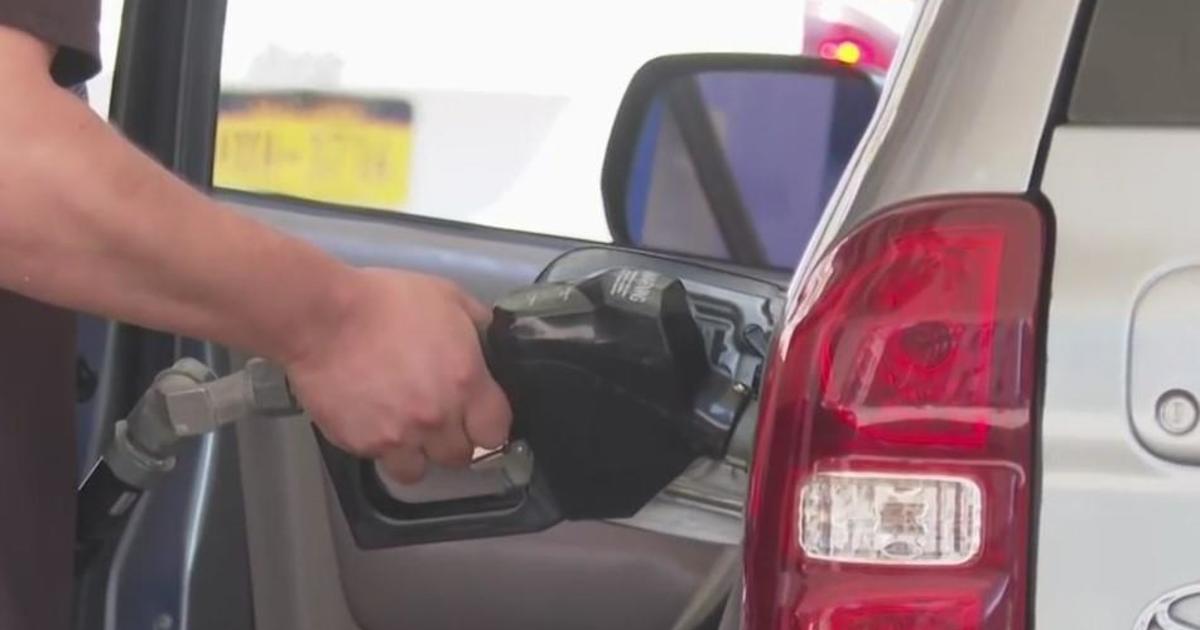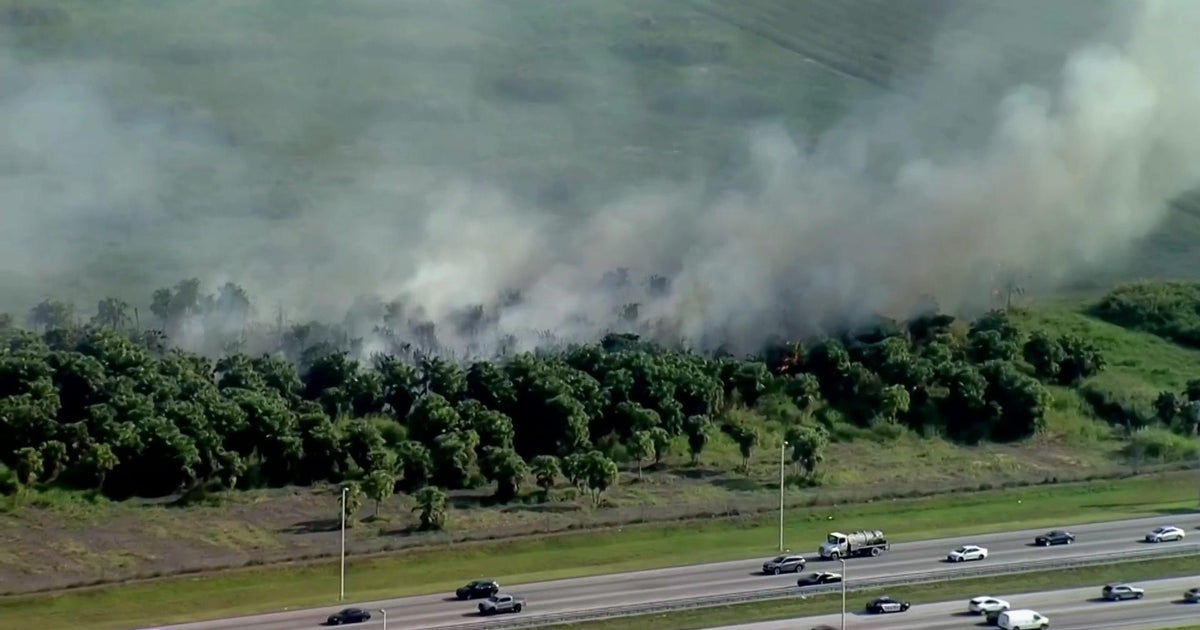The Making of Patrick Murphy, Part Two
Follow CBSMIAMI.COM: Facebook | Twitter
Read: Part 1
MIAMI (CBSMiami) -- In recent weeks, Congressman Patrick Murphy, the leading Democrat in the race to unseat Florida Senator Marco Rubio, has been forced to defend himself against allegations he misled the public by exaggerating or misrepresenting key moments in his past.
Murphy's biography claimed he graduated from the University of Miami with dual degrees in Accounting and Finance. Instead, as The Miami Herald noted, he graduated with a degree in Business Administration.
He said he spent "years" working as a CPA, even though, according to Politico, he only had his CPA license for less than nine months before leaving the firm Deloitte & Touche.
And his CPA license wasn't from Florida, where he lived and worked. As CBS4 News documented, Murphy sought his CPA license in Colorado where the requirements were lower than Florida.
Murphy has long maintained voters could trust him because of his experience as a CPA and a self-described small business owner.
"I believe that my background as a CPA and a small business owner is exactly what we need to put our country back on track," Murphy said during his first campaign for Congress in 2012. It is a line he has repeated in all his campaigns.
The business he started is called Coastal Environmental Services. It was created in the aftermath of the Deepwater oil spill in the Gulf of Mexico in 2010.
In the end, Murphy only spent a few months in the Gulf and he points with pride to the "small fleet" of oil skimming boats he claims were created by his company.
Called the Near Shore Rapid Response Oil Recovery Vessel, referred to by the acronym NSRRV, Coastal Environmental boasted they were "the most effective, economical, and reliable boat in the industry.
In press releases, brochures, and marketing material dating back to 2010 when the NSRRV was launched to clean up oil during the BP disaster, Coastal Environmental maintained the boat is "capable of collecting 100 percent of heavy oil, 90 percent of oil sheen while effectively collecting and storing tar balls."
One press release obtained by CBS4 News dated October 13, 2010, bragged that Coastal Environmental Services "has launched a new line of oil skimming boats that promises to leave conventional skimming vessels in its wake."
As proof of their claims, the company has repeatedly cited the results from a private testing facility. "The NSRRV was tested and proven at the National Oil Spill Response Research and Renewable Energy Test Facility (OHMSETT), which provides independent and objective performance testing of full-scale oil response equipment," one press release stated.
A brochure includes a chart showing the boat's effectiveness, with the heading, "Results as tested at OHMSETT."
There is no doubt that OHMSETT, located on a U.S. Naval base near Sandy Hook, New Jersey, and financed by the U.S. Department of the Interior, is the pre-eminent testing facility in the country for cleaning up oil.
OHMSETT officials, however, say they have no record of testing Murphy's NSRRV. Dave Devitis, who has worked at OHMSETT for 24 years and been the Director of Testing for the last fifteen, told CBS4 News he did not recall testing that boat, even though he is involved in almost all of the tests conducted on the site.
CBS4 News provided him a list of businesses either directly or indirectly related to the boat, including Coastal Environmental Services, Coastal Construction, Crescent SR, as well as the shipyard that built the boat, Derecktor. CBS4 News also sent him copies of some of the promotional materials, including the brochure featuring a chart supposedly showing OHMSETT test results.
After researching OHMSETT's records, Devitis told CBS4 News: "There was no company here by any of those names and also I don't recognize the skimmer or the test."
Asked if he believes the testing that is shown in the brochures was done at the OHMSETT facility in 2010, Devitis said flatly, "No."
"I don't remember testing anything that was 100 percent effective," he said. "And we never really have done anything with tar balls, so that's another red flag."
In some of its promotional material, Coastal cites "U.S. EPA OHMSETT."
When OHMSETT first opened in 1974, it was operated by the EPA – the Environmental Protection Agency. The facility closed down ten years later due to budget cuts during the Reagan Administration. The Exxon Valdez oil tanker spill in Alaska in 1989, prompted the government to re-open the facility. This time, it was funded through Bureau of Safety and Environmental Enforcement under the Department of the Interior.
In other words, the EPA has not been involved in OHMSETT in more than 30 years.
The Murphy campaign could not provide a copy of the test. Pressed for an answer, the campaign admitted the vessels were not tested at OHMSETT.
In a statement the campaign said: "Patrick worked with a shipyard to put an innovative skimming vessel into use, improving it for use in the Florida Keys. The shipyard guaranteed that the oil cleanup technology had been thoroughly tested. The results of these tests were reflected in Coastal Environmental Service's marketing materials."
The shipyard refused to comment on the testing.
Based on the campaign's statement, Devitis went back and reviewed additional records and suspects the test being cited by Coastal Environmental was done in 1978 – five years before Patrick Murphy was even born. And rather than testing the vessel, the test was for a piece of technology used on the boats.
And since Murphy made changes to the boat's design, Devitis said there is no way to know if those test results from the seventies are valid. "The only way to know is to actually test the boats," Devitis said.
THE LIFE AND TIMES OF COASTAL ENVIRONMENTAL
Less than six months after a methane gas explosion on the Deepwater Horizon, caused more than 200 million gallons of crude oil to pour into the Gulf of Mexico, the Coast Guard called off one phase of the cleanup – the use of oil skimmers. The oil was now either on beaches and in accessible estuaries or had sunk below the surface.
The flow of dollars for skimmers was now capped liked the wellhead at the bottom of the Gulf.
The timing of the September 2010 announcement couldn't have been worse for Patrick Murphy's newly formed company, Coastal Environmental Services.
A few weeks earlier, Coastal Environmental purchased an oil skimming company, Crescent SR, which had two boats operating in the Gulf. Those boats were now sitting idle. And if that wasn't bad enough, Murphy had already ordered construction of two additional skimmers, and at least one of the skimmers was still at the shipyard in Connecticut when the Coast Guard orders came down.
In essence, Coastal Environmental had four oil skimmers and no work on the horizon.
Following the clean-up in the Gulf, Coastal Environmental Services still likely had resources to draw upon. His father's business, Coastal Construction, which in 2010 was reportedly engaged in more than $1 billion in construction projects around the country, appears to have strong connections to Murphy's business.
Thomas Murphy Jr., was not only the CEO of Coastal Construction, he was one of three directors of Coastal Environmental. The vice-chairman of Coastal Construction, Daniel Whiteman, was also the President of Coastal Environmental. Patrick Murphy, for his part, was the Vice President of his company. In a statement issued this morning, the Murphy campaign states that "the companies share some top-level management and staff. However, Coastal Construction Group did not own Coastal Environmental Services." The campaign declined to detail the ownership interests in Coastal Environmental.
Coastal Construction's public relations/marketing firm, Kreps DeMaria, helped build a sales campaign that attempted to position Coastal Environmental as a premier disaster response company.
"Coastal Environmental Services specializes in hurricane, tornado, flood, earthquake, fire and other disaster remediation," the Kreps DeMaria press release declared in mid-October 2010. "Coastal Environmental Services extended its disaster recovery business unit to include oil skimming and clean-up efforts after the Deepwater Horizon oil spill."
At the time the press release went out, Coastal Environmental Services had only been in existence for less than three months. Deepwater Horizon was its first disaster.
In 2010 the skimmers, were the stars of the company. They were always featured on the company's website and Facebook page, as well as promotional brochures.
The campaign argues the boats were highly effective. They said the design of the boat was unique because of Murphy's efforts. "Unlike most skimmers on the market, Patrick's vessel could be driven through oil of any thickness and recover oil from the first three feet of an oil column," Murphy campaign spokesman Joshua Karp noted in a written statement.
The campaign added it was Murphy's idea to make sure the boats were no more than eight feet wide so they could be transported by trailer, making their response time to a disaster far shorter.
Micah Tucker, the general manager of the Connecticut shipyard where the boats were built said he remembered the Coastal Environmental boats because at least one of the boats sat in his shipyard for more than a year. He was also involved in the design and construction of the vessels and doesn't remember any discussion about having the vessels tested at OHMSETT.
The boats are now in storage facilities in Louisiana and Alabama, in case there is another spill.



